Get a Free Quote Today!
Make an Appointment Today
Service
What Is a Wood Destroying Insect Inspection?
A wood destroying insect inspection looks for termites, carpenter ants, powderpost beetles, carpenter bees, old house borers, anobiid beetles, and other insects that damage wooden structures. This comprehensive pest inspection is required by most mortgage lenders including FHA loans, VA loans, USDA loans, and conventional mortgages.
Here’s what that means for you: You’ll know if destructive pests are present, see evidence of previous damage, and understand conditions that attract these expensive problems.
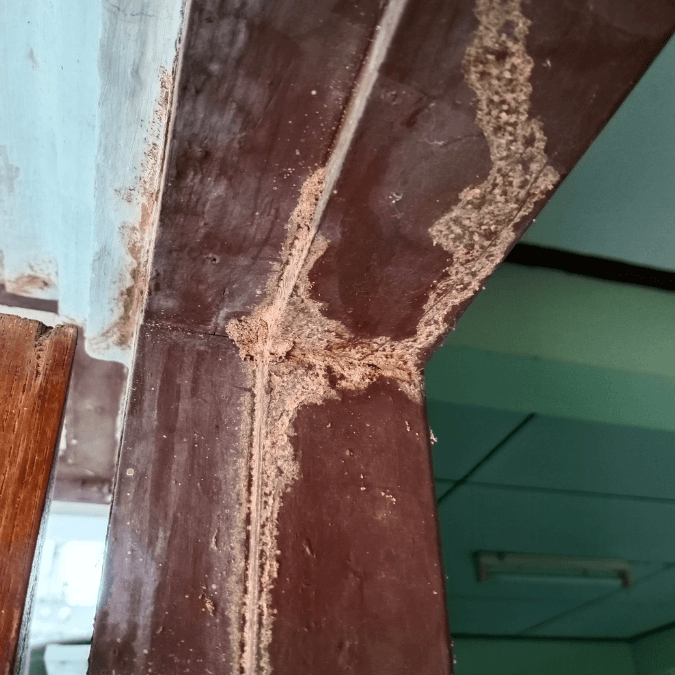
What We Look For During Your Comprehensive Pest Inspection
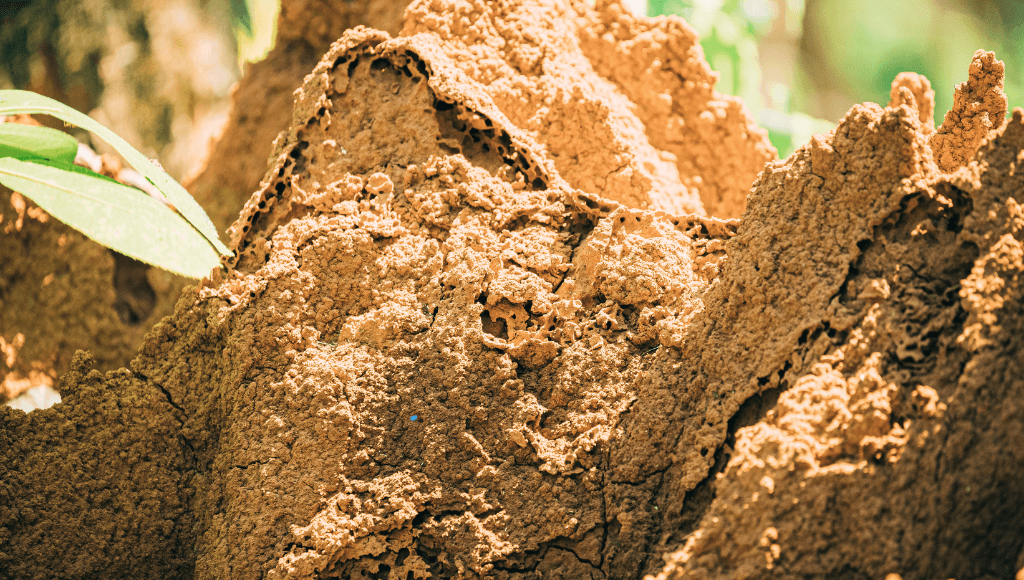
Wood Destroying Fungi and Rot
- Fungal decay and wood rot conditions
- Moisture damage creating termite habitat
- Structural wood deterioration
- Environmental factors promoting wood decay
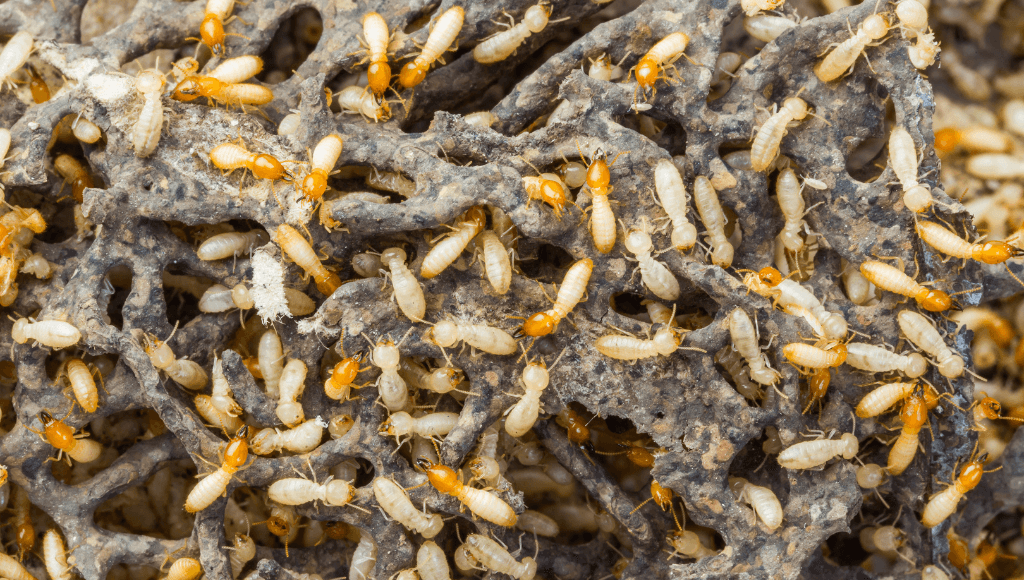
Active Insect Infestations
- Live termites (subterranean, drywood, dampwood termites)
- Active carpenter ant colonies and wood galleries
- Powderpost beetle activity and fresh sawdust
- Carpenter bee holes and tunnel activity
- Old house borer larvae and adult beetles
- Anobiid beetle infestations and damage
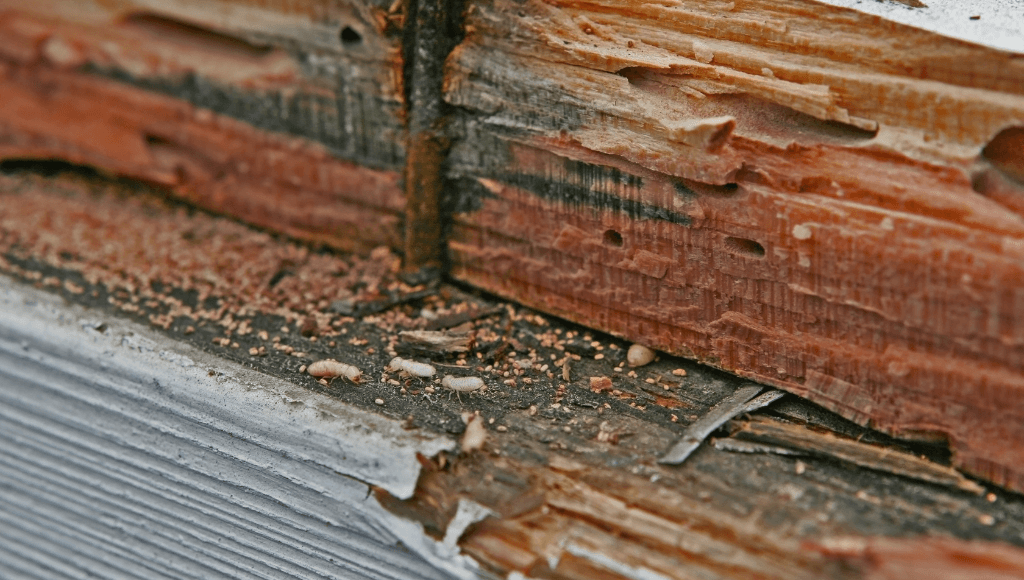
Pest Attracting Conditions
- Moisture problems that attract termites
- Wood-to-ground contact areas
- Cellulose debris near foundation
- Poor ventilation creating pest habitat

Previous Pest Damage and Exterminator Treatment
- Old termite tunnels and previous termite treatment
- Previous carpenter ant damage and pest control history
- Powderpost beetle damage patterns and treatment evidence
- Carpenter bee hole repairs and previous treatments
- Wood boring insect damage from any species
- Documentation of past professional pest control services
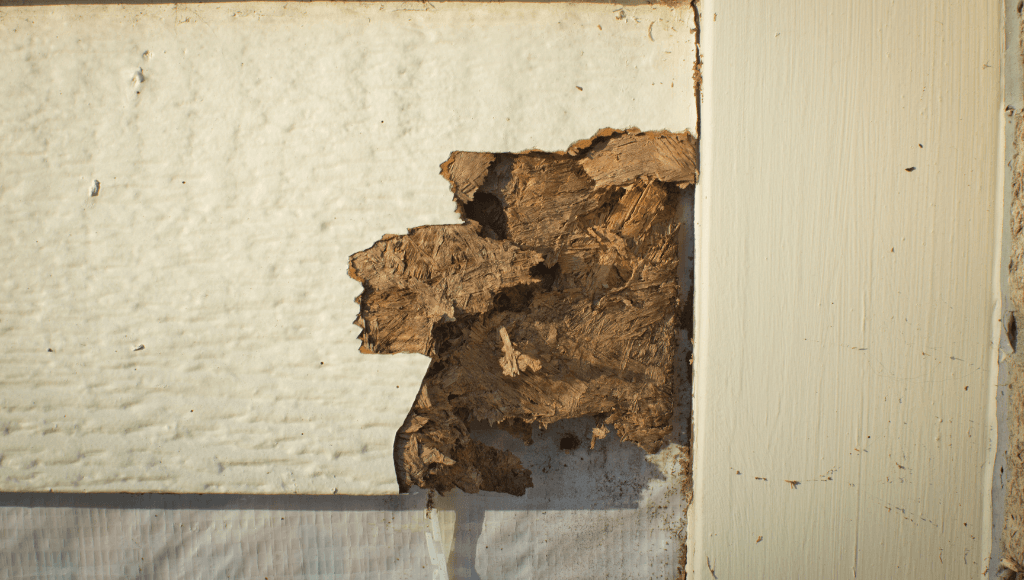
Wood Boring Insect Evidence
- Termite mud tubes, swarmers, and discarded wings
- Carpenter ant frass and excavated wood galleries
- Powderpost beetle exit holes and fine powder
- Carpenter bee perfectly round holes in wood
- Old house borer oval emergence holes
- Lyctid beetle damage in hardwood floors
Why Termite Inspections Are Critical
Silent Termite Destruction
Termites and wood boring insects work quietly inside wood structures. By the time you notice termite damage, thousands of dollars in structural repairs might be needed. Early termite detection saves money.
Mortgage Lender Requirements
Most mortgage lenders require termite inspections, especially FHA loans, VA loans, and conventional mortgages for older homes. This pest inspection may be mandatory for your loan approval and closing.
Home Value Protection
Termite damage and wood destroying pest damage affects your home’s value and can create expensive structural repair obligations. Knowing about pest problems before purchase helps with negotiation and planning.
Ongoing Termite Risk
Even previously treated properties can have recurring termite problems. Understanding current pest conditions and previous termite treatments helps you plan for ongoing pest control protection. detection saves money.
Lender Requirements
Many mortgage lenders require WDI/WDO inspections, especially for older homes or in areas with known termite activity. This inspection may be mandatory for your loan approval.
Property Value Protection
Pest damage affects your home’s value and can create expensive repair obligations. Knowing about problems before purchase helps with negotiation and planning.
Ongoing Infestation Risk
Even treated properties can have recurring pest problems. Understanding current conditions and previous treatments helps you plan for ongoing protection.
Peace of Mind for Buyers
Buying a home is one of the biggest investments you’ll ever make. A termite inspection offers peace of mind that you’re not stepping into a costly surprise.
What You Get with Your Termite and Wood Destroying Insect Inspection
Official Termite Report for Lenders
- Standardized WDI/WDO report format for mortgage companies
- Clear identification of any termite or pest findings
- Documentation of previous pest control treatments
- Recommendations for exterminator treatment or structural repairs
Detailed Pest Problem Assessment
- Photos and descriptions of any termite or wood boring insect damage
- Assessment of infestation severity and pest activity
- Explanation of pest types found (subterranean termites, carpenter ants, etc.)
- Timeline estimates for structural damage progression
Pest Control and Exterminator Guidance
- Referrals to licensed pest control professionals and exterminators
- Cost estimates for termite treatment and pest control options
- Prevention recommendations for ongoing pest management
- Long-term termite monitoring and inspection suggestions

Who Needs a Termite Inspection?
Home Buyers with Mortgage Requirements
If your lender requires a termite inspection for FHA, VA, or conventional loans, you need a qualified professional who understands both pest identification and mortgage documentation requirements.
Buyers of Older Homes Needing Pest Inspection
Homes over 10-15 years old in Kentucky and Ohio have higher risk of termite problems and wood destroying pest issues. Professional inspection provides peace of mind and negotiation information.
Previous Termite Treatment Property Buyers
If the home has been treated for termites or had pest control services, you need to understand the effectiveness of previous exterminator treatments and ongoing protection needs.
Investment Property Buyers Needing Wood Destroying Insect Inspection
Rental properties with termite problems or pest issues can create tenant problems and expensive structural repair obligations. Know what pest problems exist before you buy.
Understanding Your Termite Inspection Results

No Termites or Wood Destroying Pests Found
- Current property shows no signs of active or previous termite infestations
- Pest attracting conditions may still need attention for prevention
- Regular termite monitoring and inspections still recommended
- Clean pest report for mortgage lender requirements
Previous Termite Activity or Pest Control Treatment Evidence
- Signs of old termite damage or previous exterminator treatments
- May require disclosure but not necessarily new pest control treatment
- Important for understanding property pest control history
- May affect home warranty or pest control insurance considerations
Active Termite Infestation or Wood Destroying Pest Problem Present
- Immediate pest control treatment typically required before closing
- May delay mortgage closing until exterminator treatment completed
- Can provide negotiation leverage with seller for pest control costs
- Important for protecting your structural investment
Common Wood Destroying Insects in Kentucky & Ohio
Subterranean Termites – Eastern Subterranean Termites
- Most destructive wood destroying insect in Kentucky and Ohio
- Build characteristic mud tubes from soil to wood structures
- Swarm in spring creating winged reproductive termites
- Cause millions in structural damage across our region
Carpenter Ants – Black Carpenter Ants
- Large black ants that excavate smooth wood galleries
- Prefer moist, softened, or decaying wood structures
- Often indicate moisture problems and water damage
- Can compromise structural integrity over time
Powderpost Beetles – Lyctid and Anobiid Beetles
- Small brown beetles creating round exit holes in hardwood
- Leave fine, flour-like powder (frass) as evidence
- Attack hardwood floors, furniture, and structural lumber
- Common in Kentucky and Ohio homes with hardwood elements
Carpenter Bees – Eastern Carpenter Bees
- Large yellow and black bees boring round holes in wood
- Prefer unpainted softwood like deck railings and eaves
- Create galleries parallel to wood grain for nesting
- Can cause significant cosmetic and structural damage
Old House Borers – Hylotrupes bajulus
- Large wood boring beetles attacking softwood framing
- Create oval emergence holes and wood dust
- Larvae can remain active in wood for years
- Serious structural pest in older homes
Furniture Beetles and Deathwatch Beetles
- Small beetles attacking both hardwood and softwood
- Create small round exit holes and fine sawdust
- Common in furniture, flooring, and structural timber
- Can reinfest treated wood under right conditions
Termite and Pest Inspection Process
Schedule with Mortgage Closing Timeline in Mind
If your lender requires this termite inspection, we’ll coordinate timing to meet your closing schedule while allowing time for any needed pest control treatments.
Comprehensive Property Examination for Wood Destroying Pests
I’ll examine all accessible areas where termites and wood boring insects typically live and work, including basements, crawl spaces, and exterior structures.
Pest Documentation and Photography
Any termite findings or wood destroying insect evidence gets thoroughly documented with clear photos and descriptions suitable for lender requirements and exterminator planning.
Official WDI/WDO Report Preparation
You’ll receive the standardized termite report that meets mortgage company requirements, plus detailed explanations of any pest findings and recommendations.
Your Title Goes Here
If termite treatment or pest control is needed, I can help coordinate with licensed exterminators and provide technical support during the treatment process.
Ready to Protect Your Investment from Destructive Pests?
Don’t let silent destroyers damage your biggest investment. Get professional WDI/WDO inspection for peace of mind and lender compliance.
Frequently Asked Questions
Is this inspection required for all home purchases?
Not all, but many lenders require WDI/WDO inspections, especially for older homes or in areas with known termite activity. Check with your lender about requirements.
What if you find termites or other pests?
I’ll document the findings and help you understand treatment options. Most pest problems can be effectively treated, and finding them early prevents more extensive damage.
How much does a WDI/WDO inspection cost?
Pricing varies based on property size and complexity, typically $150-300. This is usually much less expensive than discovering pest problems after purchase.
Can this inspection be combined with a regular home inspection?
Yes, I can perform both inspections during the same visit, which saves time and often reduces the total cost for both services.
How long is a WDI/WDO report valid?
Most lenders accept reports that are 30-90 days old, but check with your lender for specific requirements. Recent reports are always preferred.
